Migrate from Avono PlantUML for Confluence (Data Center to Cloud)
We support migrating from Avono PlantUML for Confluence into Capable for Confluence or Diagrams for Confluence using our migration tool, which is currently in beta.
Introduction
If you're currently using Avono PlantUML for Confluence Data Center and looking to move to Confluence Cloud, you're in the right place.
Our migration tool is designed to help you bring your existing PlantUML diagrams over with minimal effort and zero headaches. This guide will walk you through the process step-by-step so you can move fast and preserve your team's visual documentation.
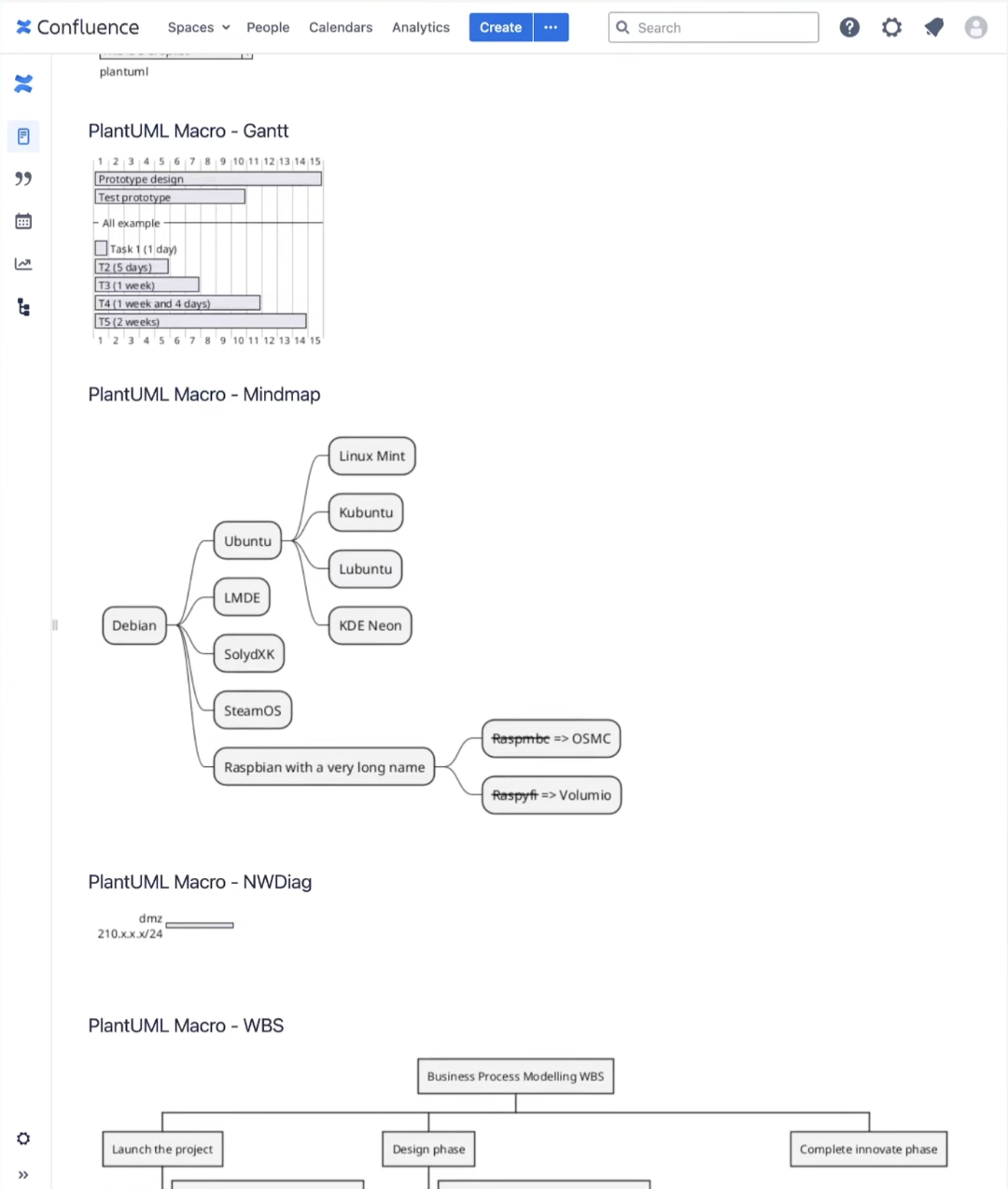
Confluence Data Center
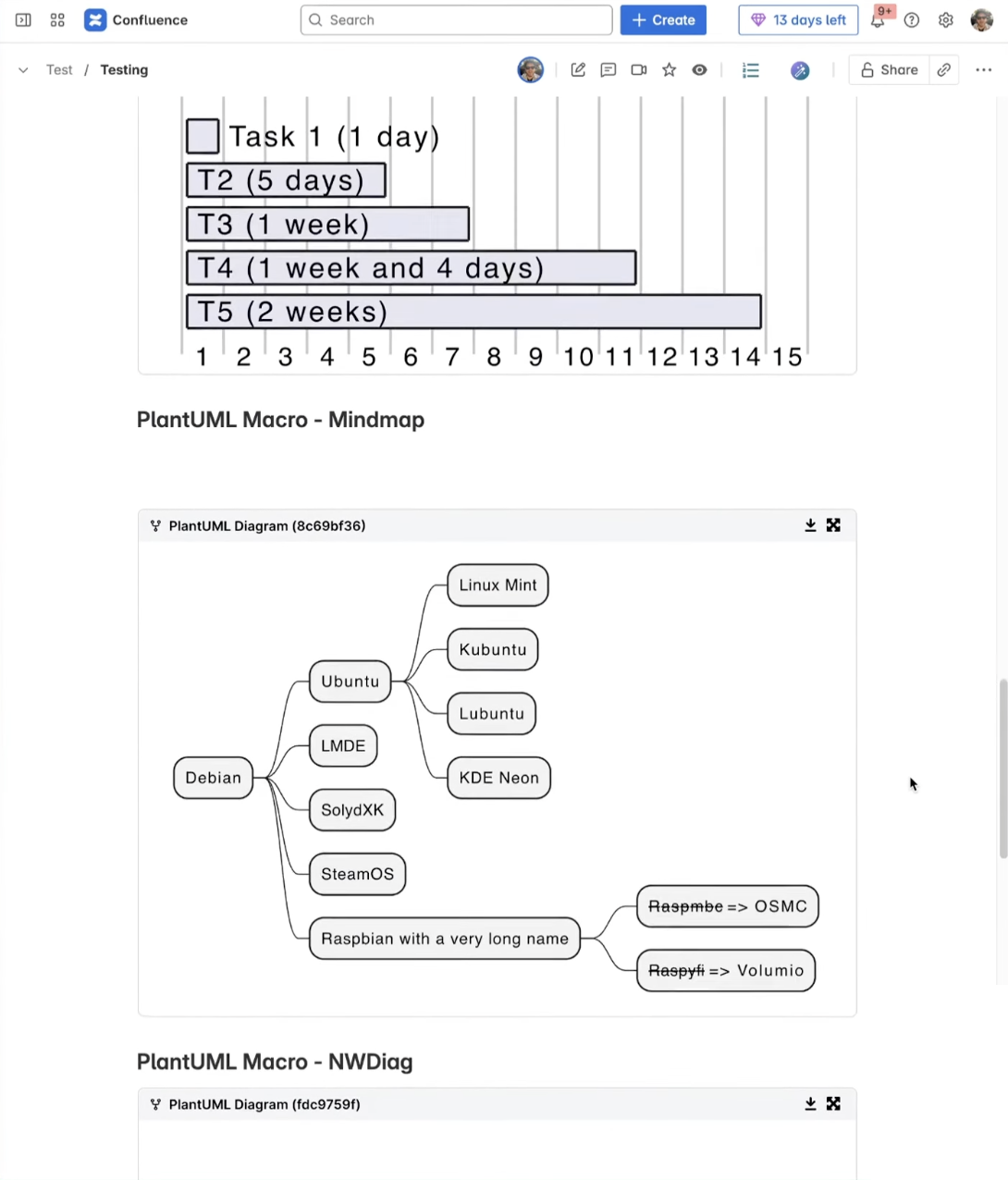
Confluence Cloud
What is supported?
Currently only macros on Confluence Pages are supported, not Blog Posts.
Macros
Macro | Support Level |
|---|---|
| SUPPORTED |
| SUPPORTED |
| SUPPORTED |
| SUPPORTED |
| SUPPORTED |
| SUPPORTED |
Diagram Types
Diagram Type | Support Level |
|---|---|
plantuml | SUPPORTED |
wbs | SUPPORTED |
nw | SUPPORTED |
mindmap | SUPPORTED |
gantt | SUPPORTED |
salt | SUPPORTED |
dot | SUPPORTED |
json | SUPPORTED |
latex | NOT SUPPORTED |
math | NOT SUPPORTED |
jcckit | NOT SUPPORTED |
ditaa | NOT SUPPORTED |
Notes
Some of the macros have options related to how they render the diagrams, like rounding, connector types, shape preferences and shadows - these are not supported.
We migrate:
The diagram type
The diagram code itself
The diagram title (if provided)
Pre-CCMA Steps
1. Determine whether your source data is compatible
First, to find out what macros are in use, you can either open the ‘Macro Usage’ page in the Confluence Administration, or run this SQL query:
Query
WITH matches AS (
SELECT
bodycontentid,
unnest(ARRAY[
CASE WHEN body ~* '<ac:structured-macro[^>]*ac:name="plantuml"' THEN 'plantuml' ELSE NULL END,
CASE WHEN body ~* '<ac:structured-macro[^>]*ac:name="plantumlrender"' THEN 'plantumlrender' ELSE NULL END,
CASE WHEN body ~* '<ac:structured-macro[^>]*ac:name="flowchart"' THEN 'flowchart' ELSE NULL END,
CASE WHEN body ~* '<ac:structured-macro[^>]*ac:name="flowchartrender"' THEN 'flowchartrender' ELSE NULL END,
CASE WHEN body ~* '<ac:structured-macro[^>]*ac:name="linkgraph"' THEN 'linkgraph' ELSE NULL END,
CASE WHEN body ~* '<ac:structured-macro[^>]*ac:name="spacegraph"' THEN 'spacegraph' ELSE NULL END
]) AS macro_type
FROM public.bodycontent
)
SELECT macro_type, COUNT(*) AS row_count
FROM matches
WHERE macro_type IS NOT NULL
GROUP BY macro_type
ORDER BY row_count DESC;Output
macro_type | row_count |
|---|---|
plantuml | 512 |
plantumlrender | 284 |
flowchart | 173 |
flowchartrender | 122 |
linkgraph | 31 |
spacegraph | 9 |
Next, we need to determine if there are any unsupported diagram types in use by the plantuml diagram macro to ensure they are compatible.
This query won’t find diagrams with the default plantuml type, but will detect the unsupported ones for you.
Query
SELECT matches.type_value, COUNT(*) AS count
FROM (
SELECT
regexp_matches(
body,
'<ac:parameter ac:name="type">(ditaa|wbs|dot|gantt|nw|salt|jcckit|mindmap|json|latex|math)</ac:parameter>',
'gi'
) AS match_array
FROM public.bodycontent
) AS sub,
LATERAL (
SELECT match_array[1] AS type_value
) AS matches
GROUP BY matches.type_value
ORDER BY count DESC;
Output
diagram_type | count |
|---|---|
mindmap | 16 |
wbs | 12 |
json | 5 |
gantt | 3 |
nw | 3 |
dot | 2 |
salt | 1 |
ditaa | 0 |
jcckit | 0 |
latex | 0 |
math | 0 |
2. Migrate the data to Confluence Cloud
Use the Confluence Cloud Migration Assistant (CCMA) to migrate your Spaces and Pages to Confluence Cloud, then follow the step-by-step below.
Do not edit pages in Confluence Cloud before you run the migrator or the diagram data may be removed, preventing us from migrating the data (this is due to it being in a legacy format).
Post CCMA Steps
Migration is a complex process:
Always do a test run of the migration on a copy of the space and verify it’s success.
Always make a backup before performing a migration.
1. Ensure that the current account has full read/write access on all pages
The migrator runs as your current account, therefore you must ensure that your user account has full read and write priveledges on the spaces and pages that you intend to migrate.
2. Open the Confluence Administration page from the top-right
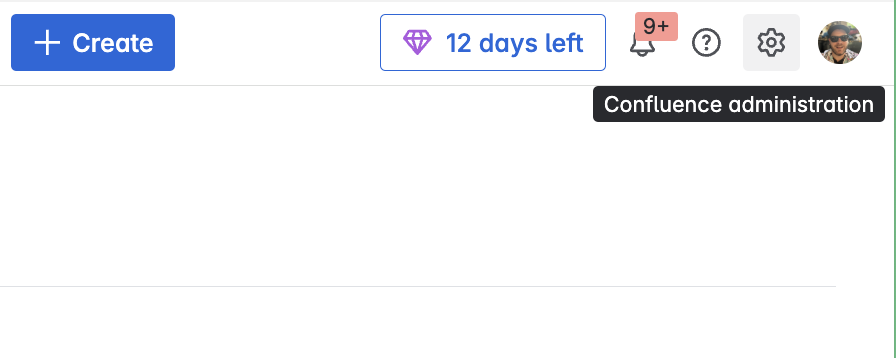
3. Click on Apps → Capable from the left sidepanel
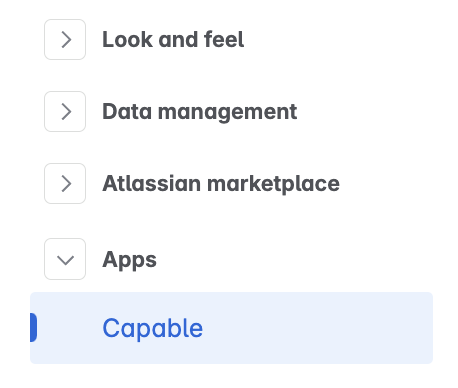
4. Click on the ‘Migration’ tab, select Avono
You can change the scope of the migration by using the CQL filter in the options panel.
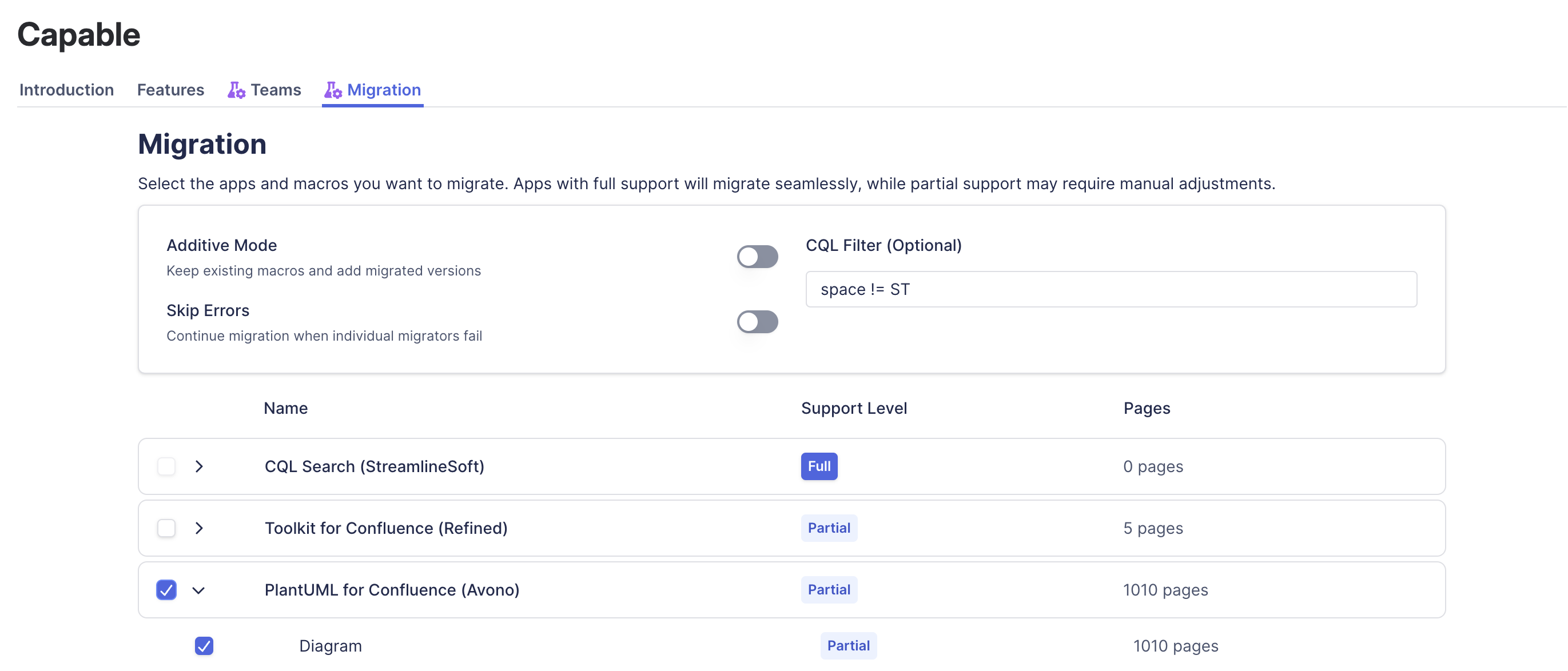
5. Run a validation
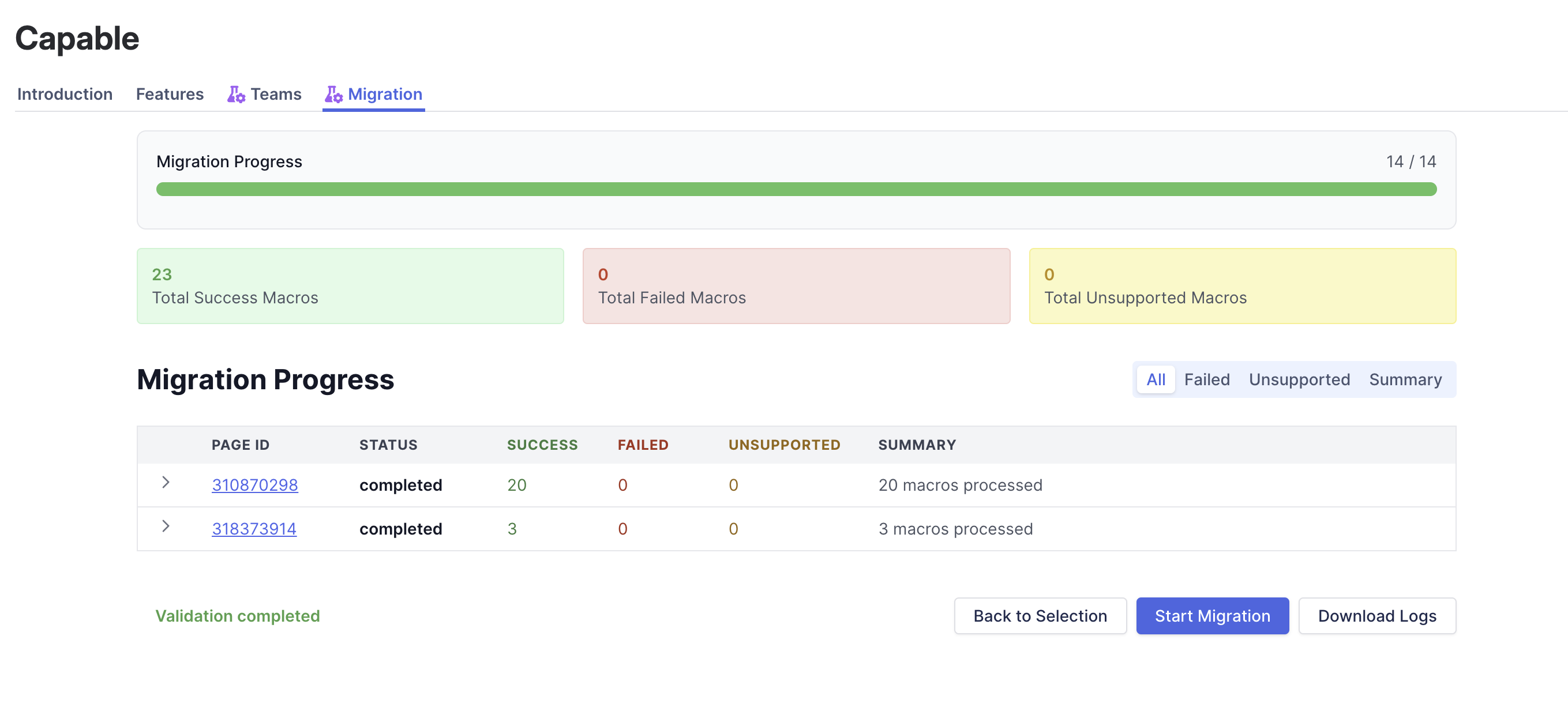
6. Click ‘Start Migration’ to start the migration
During migration, you will see a log of the operations being performed.
7. Your diagrams are now migrated!
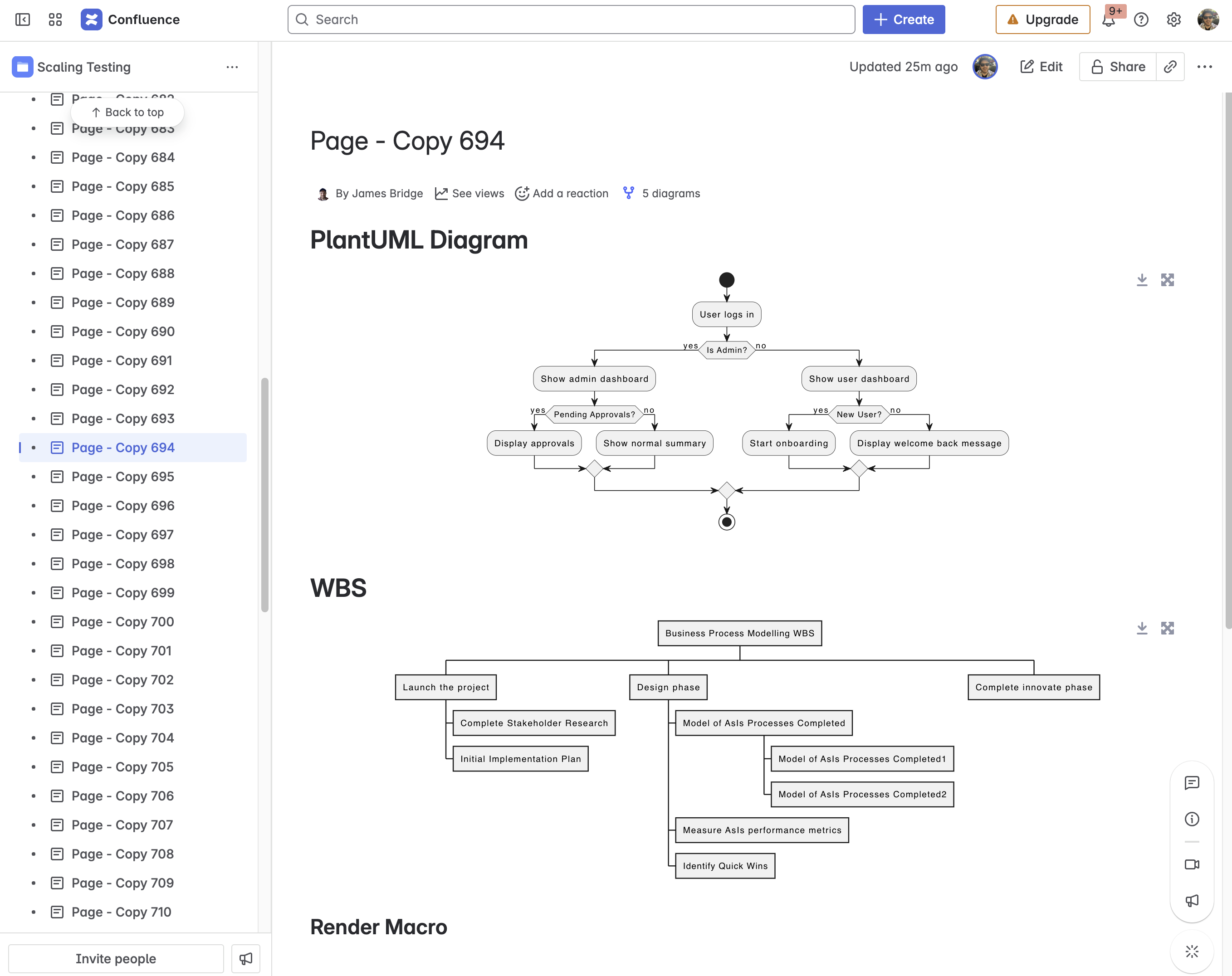
.png)